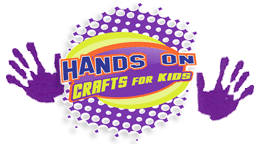| |
 |
|
|
|
|
 |
|
|
| |

by Tracia Ledford Williams
Visit a Colonial
home and you'll notice the use of decorative painting. Wallpaper
was very scarce and even paint was not readily available. In fact,
the use of certain pigments indicated wealth. Stenciling adorned
many surfaces but especially walls and ceilings. This project
introduces stenciling on a fun decorative coaster in the traditional
Pennsylvania Dutch style.
|
 You
will need: You
will need:
- Pennsylvania Dutch stencil,
or 4" Stencil of your choice
- 1" Stencil brushes for
each color
- Glass and Tile Paint (Apple
Candy Green, Mediterranean Blue, Chocolate, Red Red)
- Glass and Tile Clear Gloss
Glaze
- Glass and Tile Surface
Cleaner
- 41/4" x 41/4" White ceramic
tile
- 3/4" Flat paintbrush
- Tacky glue
- Scissors
- 5" x 5" Piece of felt
- Masking tape
- Black pen for glass
Instructions:
- 1. Clean tiles with surface
cleaner then paint an even coat of gloss glaze over the tile.
- 2. Glue felt to the back
of the tile. When dry, trim felt even with edge of tile.

- 3. Position stencil on
the tile and secure with masking tape. Dip stencil brush into
paint then rub excess paint onto a paper towel. Using a circular
motion, paint over the open areas of the stencil. Use a different
brush for each color of paint. The following colors are given
for the Pennsylvania Dutch design:
Wreath and Leaves
- Apple Candy Red
Flowers - Mediterranean Blue
Dots - Red Red
- 4. Allow paint to dry.
Seal tile with clear gloss glaze and let dry. Add writing or
outlines with the Black pen.
Optional: Make your own stencil
by tracing a design onto clear contact paper. Cut out the areas
to be stenciled then stick the contact paper onto the tile. Stencil
with the colors of your choice. Carefully remove contact paper when
paint has dried.
View
Patterns
|
Home
| Television | Projects
| Book Order | Helping
Kids | Teachers | Philosophy
E-mail questions about Hands On Crafts for Kids to info@craftsforkids.com
© Copyright 2004 Katherine Stull, Inc.
|

 You
will need:
You
will need:




